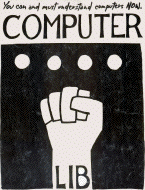
 In the discussion under the last two Rebooting RSS pieces there were two key points, both of which, together, give a clear sense of where this is going.
In the discussion under the last two Rebooting RSS pieces there were two key points, both of which, together, give a clear sense of where this is going. 
 Pito Salas says that the reason Twitter is so easy is that they have subscription down to a single click. Yes indeed. That's something RSS can't do, although in a perfect world it would. It's that ideal that I start the design with.
Pito Salas says that the reason Twitter is so easy is that they have subscription down to a single click. Yes indeed. That's something RSS can't do, although in a perfect world it would. It's that ideal that I start the design with. 
 Winter Seale says that if subscription is to get easy, that feed engines must not just import OPML, they must be able to subscribe to it.
Winter Seale says that if subscription is to get easy, that feed engines must not just import OPML, they must be able to subscribe to it. 
 +1
+1 
 With subscriptions and reading decoupled, we just need to settle on the central place to manage subscriptions. That's the place all the content sites would have to point to, to make subscribing as easy as it is in Twitter. With N possible places to subscribe you get icon hell.
With subscriptions and reading decoupled, we just need to settle on the central place to manage subscriptions. That's the place all the content sites would have to point to, to make subscribing as easy as it is in Twitter. With N possible places to subscribe you get icon hell. 
 In the first piece in the series, I said it needs to be a foundation that runs this service. Each user has an account, and it serves up OPML to anyone you want it to. There must be lots of competition in all other areas of RSS, but this is the one place where you need to reduce choice, to centralize, to make it simple.
In the first piece in the series, I said it needs to be a foundation that runs this service. Each user has an account, and it serves up OPML to anyone you want it to. There must be lots of competition in all other areas of RSS, but this is the one place where you need to reduce choice, to centralize, to make it simple. 
 For people like you and me who don't mind a little complexity we can host our subscription lists elsewhere.
For people like you and me who don't mind a little complexity we can host our subscription lists elsewhere. 
 BTW, when thinking about this, don't think about RSS as it used to be. Think about it as the way we de-couple Twitter from the servers of a single vendor. When they do things you don't like, think about this reboot. Even if you don't use RSS and OPML, it's going to look like this, if it's not locked up in a single vendor's cloud.
BTW, when thinking about this, don't think about RSS as it used to be. Think about it as the way we de-couple Twitter from the servers of a single vendor. When they do things you don't like, think about this reboot. Even if you don't use RSS and OPML, it's going to look like this, if it's not locked up in a single vendor's cloud. 
 Another point -- even if it's a foundation that runs the central subscription service, it pays to think about 1. Companies that have the technical expertise in building such services, and 2. Content platforms whose support will help bootstrap this service in the field.
Another point -- even if it's a foundation that runs the central subscription service, it pays to think about 1. Companies that have the technical expertise in building such services, and 2. Content platforms whose support will help bootstrap this service in the field. 
 In category 1, the one I'm most familiar with is XMarks (formerly FoxMarks when their service only worked with Firefox). They do a fantastic job of centralizing bookmarks. I'm sure there are others. Ultimately the service is going to operate very much like XMarks.
In category 1, the one I'm most familiar with is XMarks (formerly FoxMarks when their service only worked with Firefox). They do a fantastic job of centralizing bookmarks. I'm sure there are others. Ultimately the service is going to operate very much like XMarks. 
 In category 2, the vendors who can provide the initial push to get this working are the blogging tool vendors, WordPress, SixApart, Tumblr, Posterous, etc. And the publications whose content wants to be independent of the companies of Silicon Valley. I know today most of the management at these companies don't see Apple, Twitter, Facebook and Google as a threat. But over time I am positive they will. It'll be good, as that becomes more apparent, to have a network to provide independent support to sources of content and new ways to read it.
In category 2, the vendors who can provide the initial push to get this working are the blogging tool vendors, WordPress, SixApart, Tumblr, Posterous, etc. And the publications whose content wants to be independent of the companies of Silicon Valley. I know today most of the management at these companies don't see Apple, Twitter, Facebook and Google as a threat. But over time I am positive they will. It'll be good, as that becomes more apparent, to have a network to provide independent support to sources of content and new ways to read it. 

 I think the picture is becoming pretty clear, for anyone who is schooled in the technology, and willing to put an hour or so into reading and thinking about it. If you're not convinced, and you like technical puzzles, try to come up with an alternative, and see if it doesn't involve the basic elements outlined here. Centralized subscriptions. A foundation guaranteeing neutrality, with support from the content vendors. If you really think you have one, it's worth a blog post, don't waste the idea on a comment. And shooting from the hip with little or no thought isn't going to get you to the answer.
I think the picture is becoming pretty clear, for anyone who is schooled in the technology, and willing to put an hour or so into reading and thinking about it. If you're not convinced, and you like technical puzzles, try to come up with an alternative, and see if it doesn't involve the basic elements outlined here. Centralized subscriptions. A foundation guaranteeing neutrality, with support from the content vendors. If you really think you have one, it's worth a blog post, don't waste the idea on a comment. And shooting from the hip with little or no thought isn't going to get you to the answer. 
 And, as always, if you like the way things work now -- the good news is you may get to continue doing it. There are no guarantees as the tech companies who own the all-in-one services have full power to change how they work. This is what gets people riled up about Facebook, and what will get them going about Twitter (reading tea-leaves, first they shook up the developers, next they will have to shake up the users too).
And, as always, if you like the way things work now -- the good news is you may get to continue doing it. There are no guarantees as the tech companies who own the all-in-one services have full power to change how they work. This is what gets people riled up about Facebook, and what will get them going about Twitter (reading tea-leaves, first they shook up the developers, next they will have to shake up the users too). 
 If you study the history of technology, you'll see that it would be unprecedented if the unbundling didn't take place. It always seems to work like this. In the early stages of a technology layer, the industry provides training wheels, all-in-one packages that limit flexibility in favor of simplicity. But eventually two things happen: 1. The companies find they have to make changes to scale the business model, and 2. More and more users get comfortable with the technology and no longer need the training wheels. When these reach critical mass, that's when new layers like personal computers and the World Wide Web are fully realized. Ultimately computers are, imho, about liberating people and ideas. To build layers though we have to accept limits. Its this iterative process that's led us to where we are now.
If you study the history of technology, you'll see that it would be unprecedented if the unbundling didn't take place. It always seems to work like this. In the early stages of a technology layer, the industry provides training wheels, all-in-one packages that limit flexibility in favor of simplicity. But eventually two things happen: 1. The companies find they have to make changes to scale the business model, and 2. More and more users get comfortable with the technology and no longer need the training wheels. When these reach critical mass, that's when new layers like personal computers and the World Wide Web are fully realized. Ultimately computers are, imho, about liberating people and ideas. To build layers though we have to accept limits. Its this iterative process that's led us to where we are now. 